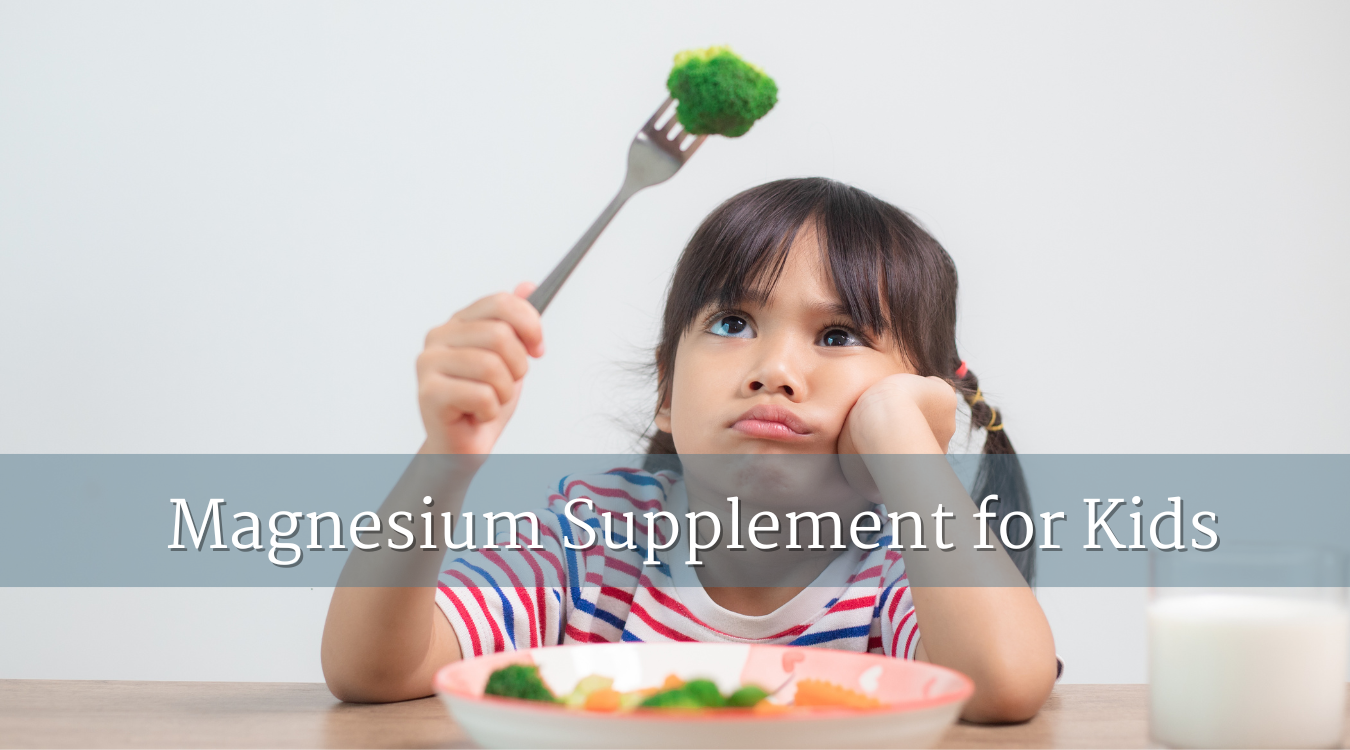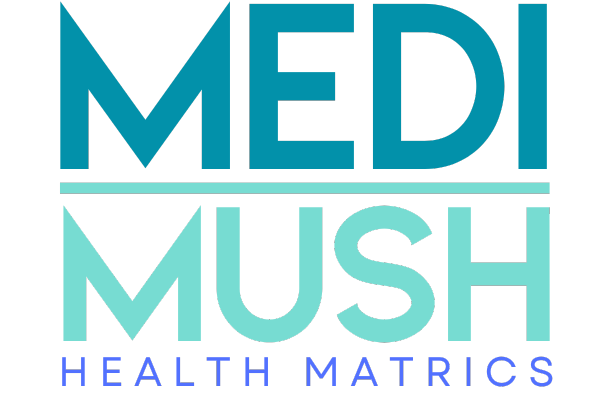
Magnesium Supplements for Kids: The Complete Guide Every Parent Needs
When it comes to children’s health, parents leave no stone unturned. From ensuring a balanced diet to encouraging regular exercise, you work hard to keep your kids thriving. But what if a key nutrient, essential for over 300 biochemical processes in the body, is being overlooked? Enter magnesium, the unsung hero of childhood health.
In this guide, we’ll uncover why magnesium matters for kids, signs your child might be deficient, and how supplements can bridge the gap safely and effectively.
Why Magnesium Is Crucial for Kids
Magnesium is a multitasking mineral with a big job. It plays a role in:
- Bone Growth: Magnesium supports calcium absorption, critical for developing strong bones and teeth.
- Energy Production: It helps convert the food kids eat into usable energy.
- Nervous System Regulation: Magnesium promotes calmness, which can benefit kids struggling with anxiety, hyperactivity, or poor sleep.
- Muscle Function: From playground antics to sports practice, magnesium keeps muscles functioning optimally.
Is Your Child Getting Enough Magnesium?
Many children today don’t get enough magnesium due to diets heavy in processed foods and low in magnesium-rich options like nuts, seeds, and leafy greens. Signs of deficiency can include:
- Irritability or Mood Swings
- Trouble Sleeping
- Muscle Cramps or Twitches
- Poor Concentration
- Constipation
If any of these sound familiar, magnesium supplementation could be a game-changer.
Natural Sources of Magnesium for Kids
Before jumping into supplements, it’s wise to check your child’s diet. Some magnesium-rich foods include:
- Bananas
- Almonds (or almond butter)
- Spinach
- Avocado
- Pumpkin seeds
- Dark chocolate (yes, you read that right!)
However, picky eating or food sensitivities might make it tough to hit daily magnesium targets. That’s where supplements step in.
Choosing the Right Magnesium Supplement for Kids
Not all magnesium supplements are created equal. Here's what you need to know:
1. Forms of Magnesium
- Magnesium Glycinate: Gentle on tummies and ideal for kids with sensitive stomachs or anxiety.
- Magnesium Citrate: Great for kids dealing with constipation but may cause loose stools in higher doses.
- Magnesium Malate: Known for boosting energy, this form is helpful for active kids.
Avoid magnesium oxide as it’s poorly absorbed and can cause digestive upset.
2. Dosage
The recommended daily allowance (RDA) for magnesium varies by age:
- 1–3 years: 80 mg/day
- 4–8 years: 130 mg/day
- 9–13 years: 240 mg/day
Check with your paediatrician to ensure your child gets the right amount.
3. Delivery Methods
Kids can be fussy about taking supplements, so consider these options:
- Chewable Tablets or Gummies: Perfect for younger kids who dislike swallowing pills.
- Powders: Can be mixed into water or juice for easy ingestion.
- Topical Sprays or Lotions: Absorbed through the skin, ideal for kids with sensitive digestive systems.
Benefits of Magnesium Supplements for Kids
Parents often notice quick wins after adding magnesium to their child’s routine, including:
- Improved Sleep Patterns: Magnesium helps the body produce melatonin, the sleep hormone.
- Better Focus and Mood: Great for children with ADHD or anxiety.
- Digestive Regularity: No more tummy troubles from constipation.
- Fewer Muscle Cramps: Especially helpful for active kids or those in growth spurts.
Magnesium and Methylation: The Unsung Connection
Magnesium plays a pivotal role in methylation, a biochemical process essential for DNA repair, detoxification, and neurotransmitter production. Methylation affects everything from mood regulation to energy production, and magnesium acts as a co-factor for enzymes that drive this process. Without adequate magnesium, methylation can slow down, potentially leading to imbalances in mental health, immunity, and even cognitive development—making it a vital nutrient for growing kids.
FAQs About Magnesium for Kids
1. Is magnesium safe for children?
Yes, magnesium is safe for kids when taken within recommended limits. Consult your paediatrician before starting supplements, especially if your child has a medical condition or takes medications.
2. Can magnesium supplements cause side effects?
In some cases, high doses can lead to diarrhoea or stomach upset. Start with a low dose and monitor your child’s response.
3. When is the best time to give magnesium to my child?
Evenings are ideal for magnesium, as it promotes relaxation and sleep.
4. How long before I see results?
Results can vary, but many parents notice improved sleep or reduced anxiety within a week.
Tips for Incorporating Magnesium into Your Child’s Routine
- Mix powdered magnesium into bedtime milk or water for a calming drink.
- Choose fun, fruity-flavoured gummies that feel like a treat.
- Pair magnesium supplements with other calming bedtime rituals like a warm bath or reading.
Whole Foods Rich in Magnesium: Nature’s Supplements
While supplements can be a convenient option, whole foods remain the gold standard for delivering magnesium alongside other essential nutrients. Incorporating these foods into your child’s diet not only boosts magnesium intake but also supports overall health with fibre, vitamins, and antioxidants.
Here are some of the top magnesium-rich foods to add to your family’s meals:
1. Seeds and Nuts
- Pumpkin Seeds: A powerhouse snack with 150 mg of magnesium per 1 oz.
- Almonds: 80 mg of magnesium per 1 oz, perfect for trail mixes or almond butter.
- Chia Seeds: 95 mg of magnesium per 2 tablespoons, great for smoothies or puddings.
2. Leafy Greens
- Spinach: 157 mg per cooked cup, a versatile addition to pastas, omelettes, or smoothies.
- Swiss Chard: 150 mg per cooked cup, delicious in salads or sautéed as a side dish.
3. Legumes
- Black Beans: 120 mg per cup (cooked), perfect for soups, tacos, or as a rice pairing.
- Edamame: 65 mg per cup (cooked), an easy, kid-friendly snack.
4. Whole Grains
- Quinoa: 118 mg per cup (cooked), a great base for salads or bowls.
- Brown Rice: 84 mg per cup (cooked), an easy swap for white rice in meals.
5. Fruits
- Avocado: 58 mg per medium avocado, ideal for toast, guacamole, or salads.
- Bananas: 32 mg per medium banana, a portable snack with natural sweetness.
6. Dark Chocolate
- 70–85% Dark Chocolate: 64 mg per 1 oz, a delightful treat that’s as nutritious as it is delicious.
By incorporating these foods into your child's diet, you can naturally boost their magnesium intake. Simple swaps like a spinach salad, quinoa bowl, or a sprinkle of chia seeds in yoghurt can make a big difference over time!
Envision a Magnesium-Rich Future for Your Child
Imagine your child waking up refreshed after a good night’s sleep, staying calm and focused in school, and feeling energised for playtime. By addressing a magnesium deficiency, you’re not just supporting your child’s health today but building the foundation for a thriving future.
If you’re ready to explore how magnesium could benefit your child, consult your paediatrician and choose a supplement that aligns with your child’s needs. Remember, a small addition like magnesium can make a world of difference!



